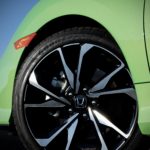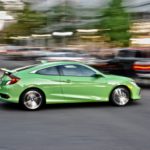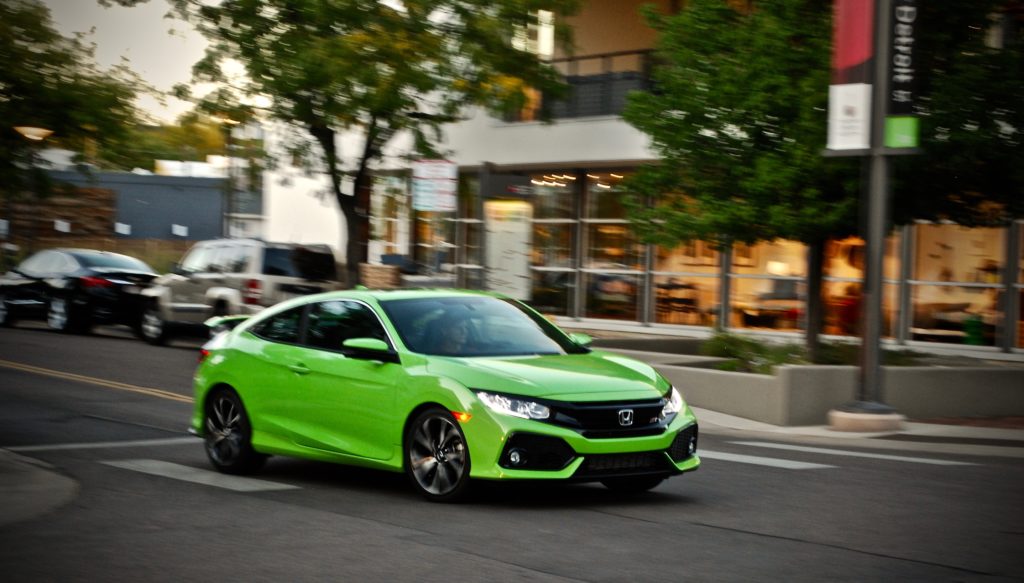
Honestly speaking, the past five years spent with the 9th generation Civic Si have been some of the longest years for Honda fans as one competitor after another surpassed it in terms of speed and handling. And this comes from someone that was a part of the development team.
After a year hiatus, the 2017 Honda Civic Si embraces the fresh new world of sport compacts with turbocharged engines and advanced chassis electronics but in doing so leaves behind the famed high-revving mechanical madness of VTEC. The latest Si is undeniably impressive and provides a great value but does it satisfy the Si faithful?
Static Review – Exterior
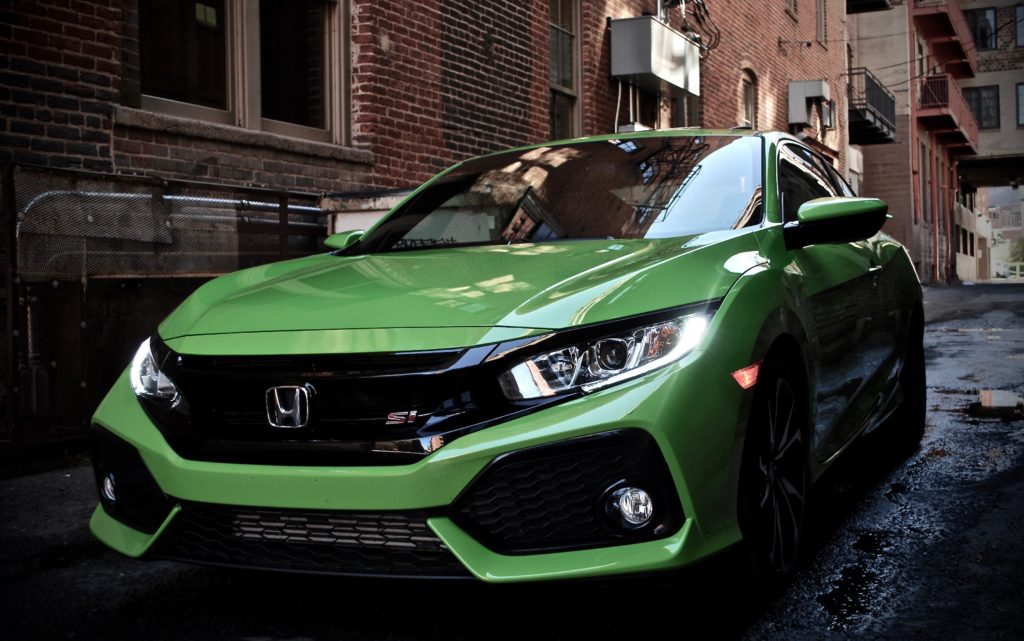
Helping distinguish the Si models from the regular, 10th generation Civic is a high gloss black grille in place of chrome, the large faux intake features in the front bumper, a rear skirt that flows around the hexagonal exhaust outlet, and last but certainly not least, a large raised wing. Lest anyone think this is all for show, Honda claims these changes add to the aerodynamic stability of the car at high speed. The one inch larger wheels and low profile tires complete the athletic stance of the car.
The Civic Si’s styling is more dramatic than years in the past with sharper lines and larger features but resists looking overly styled thanks to the Civic’s sharp body curves and its low and wide profile.
Static Review – Interior
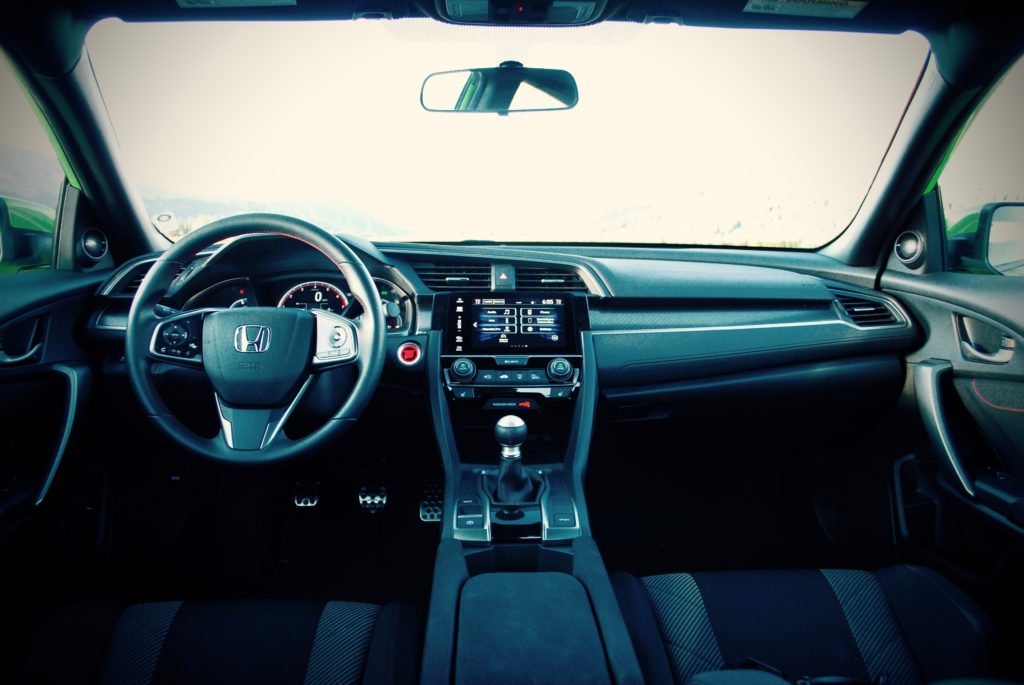
The sporting enhancements continue with the interior. The fabric seats feature deeply bolstered frames that are 17% lighter than those of the previous generation. With integrated headrests, Si logos, and three stage heating, they provide the look, support, and features of a more expensive sports car.
The steering wheel gets leather treatment and its contours allow for a confident grip. The controls on the steering wheel have taken a step backward in tactile feel but are ergonomically located and easily identifiable for no-look use.
In front of the driver is the 7” Driver Information Interface that displays the vehicle speed, RPM, etc. and, unique to the Si, boost pressure, throttle and brake pedal positions, g-meter, and lap timer. The blue hue color theme has been replaced with red to emphasize the sporty atmosphere.
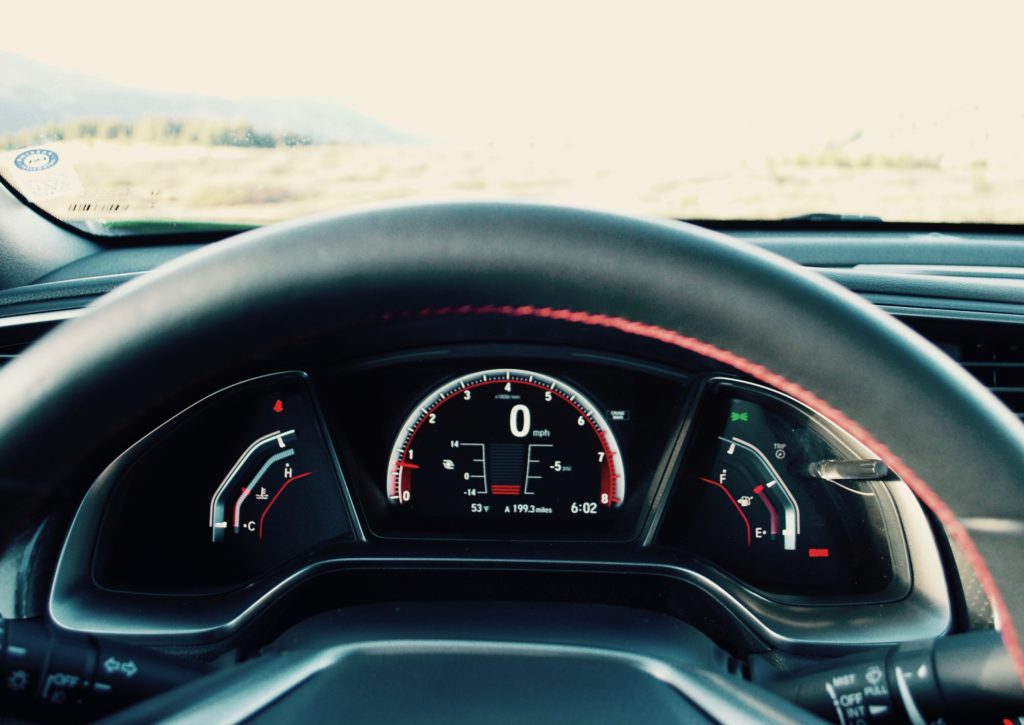
The accommodating and comfortable center console leads up to the leather wrapped, aluminum 6-speed manual gear shifter. Structurally fortified for use in the Si, the shifter also features shorter throws than those in the standard Civic.
Physical controls throughout the cabin have a high quality look and feel but there are several areas of blanked buttons, making it seem like you skipped out on a number of features. This is odd as the Si comes very well equipped.
Visibility out front is outstanding with a low cowl, thin a-pillars, and a high leading roofline edge. This high roofline provides great headroom for front passengers although the dramatic slope of the coupe’s profile severely limits headroom for the rear passengers. Legroom and hip-room in back is plenty sufficient for two while the 60/40 split folding seat adds to the car’s versatility.
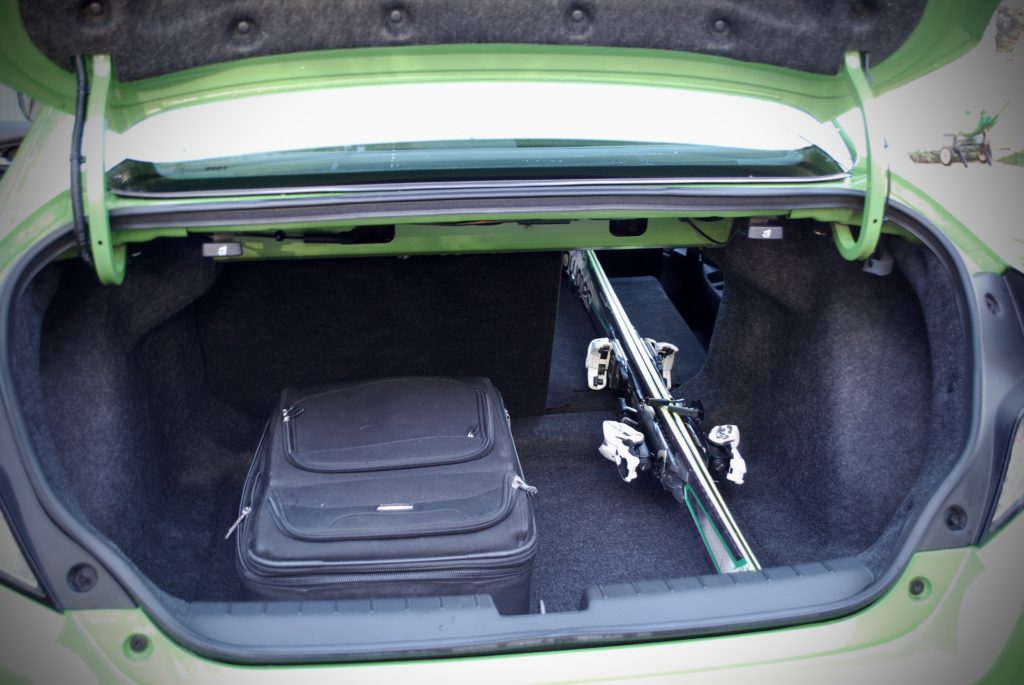
Static Review – Technology
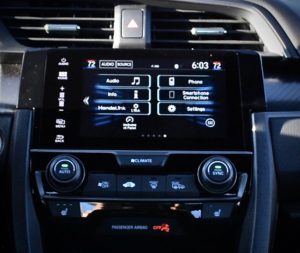
To better understand of how Honda equipped the Si, consider the EX-T model as its starting platform. That means keyless access with Walk Away Auto-Lock, push button start, heated side mirrors, sunroof, LaneWatch, dual-zone auto climate controls, and premium audio included as standard equipment.
The center 7” infotainment touch screen provides the interface for Android Auto/ CarPlay, XM, USB, Bluetooth, HD radio, Pandora, SMS, as well as HondaLink and HondaLink Assist which can use your cell phone to contact emergency services in case an accident has been detected. The CD player is officially dead to the Civic. The 10-speaker + subwoofer premium audio system has no problem punching out bass while the lack of a physical volume knob consistently detracted from the its ease of use. Honda has remedied this in newer developed models so expect a similar update to the Civic eventually.
The large infotainment screen also serves as the live display of the LaneWatch camera which is mounted in the passenger side mirror and provides a wide view down the side of the car. This is especially advantageous in when commuting alongside bicyclists.
Tech features such as LED headlights, Sat/ Nav, and Honda Sensing remain exclusive to the Civic Touring trim.
Static Review – Chassis/ Powertrain
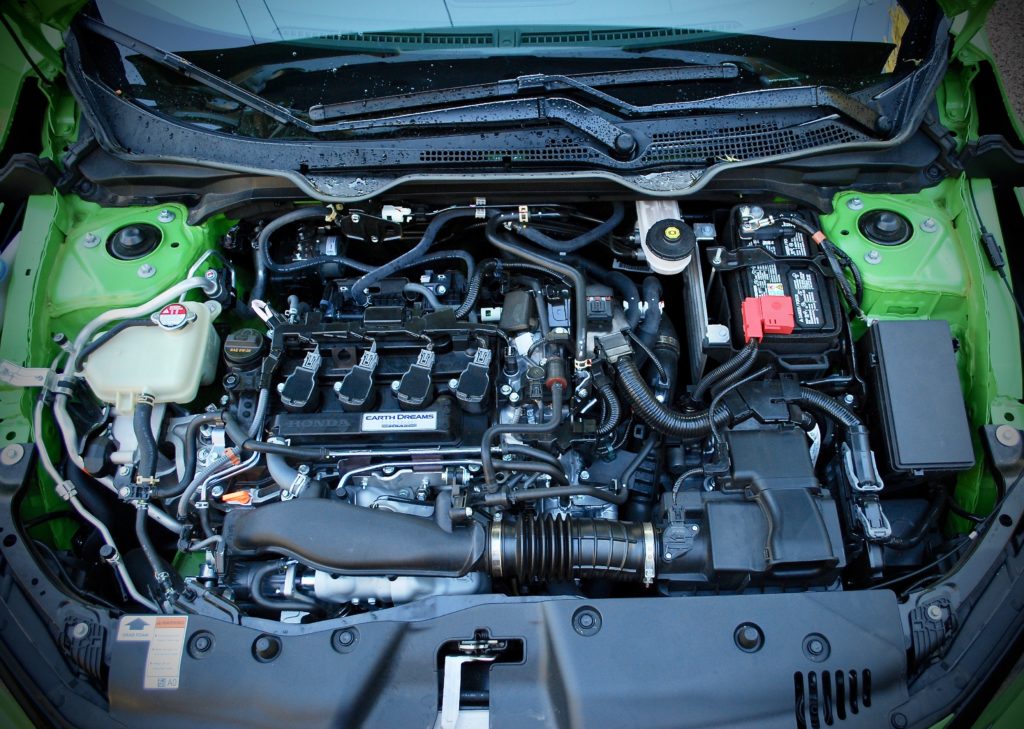
The biggest departure from Civic Si’s in the past is the lack of the VTEC system which allowed for a secondary cam profile and a surge in high RPM power. Coincidentally, it allowed for better driveability in the lower part of the rev-band. But as the industry has continued to advance with direct injection and combustion monitoring, turbocharging has become the preferred method of achieving high power ratings while maintaining the fuel economy of a downsized engine.
Compared to the standard Civic models, previous Si generations took significant hits in fuel economy ratings, even up to nearly 20% with their larger engines. However, the powertrain of the latest Si maintains the same engine displacement and gearing as the standard model. As a result, the EPA Combined rating only drops 9% while registering a 28% improvement over the the previous generation’s larger 2.4L engine. In fact, the Civic Si’s fuel economy ratings easily best those of its similarly powered competitors.
Employing a unique turbocharger and increasing the maximum boost pressure over the standard Civic 1.5L turbo four cylinder engine, output jumps by 31 peak horsepower and 25 ft*lb of torque. Compared to the naturally aspirated engine in the previous Si, the flexibility of the turbo becomes especially noticeable as peak torque begins at a low 2,100 RPM and is maintained all the way to 5,000 RPM.
Transferring this much power to the front tires often creates a traction problem, especially when accelerating out of a turn. Some manufacturers utilize the brakes to limit wheel slip while others choose a more efficient mechanical device. Honda’s system is a helical limited slip differential unit and mechanically controls power distribution to each wheel seamlessly with no wearing components.
The McPherson Strut front and multi-link rear suspensions receive numerous updates to improve turn in and sharpen the overall handling.
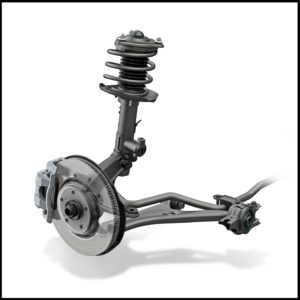
The Adaptive Damper System allowed Honda engineers to create two different dampening characteristics, Normal and Sport, which can be selected by the driver. The disc brakes at each corner have been enlarged to better manage the heat generated from repeated hard braking. Even the motor of the electronic power steering system has been upgraded to handle the increased dynamic loads.
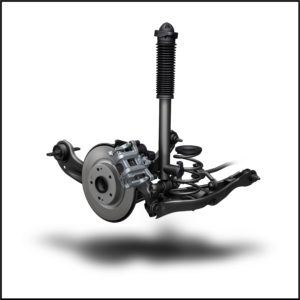
In addition to the mechanical chassis upgrades, electronic systems from the standard Civic carry over from the performance minded Agile Handling Assist which will selectively brake a specific wheel to induce yaw to the mundane Brake Hold system which frees the driver from having to keep a foot on the brake at a traffic light. The latter being one of those “don’t knock it until you’ve tried it” features.
Static Review – Price
Using the Civic EX-T as the starting price point, the exclusive interior, exterior, engine, and chassis features and components require an additional $2,300. With summer tires being the only option ($200), the total price of the Civic Si in this review is $24,975. While it’s difficult to directly compare against competitors with the varying feature content and power outputs, its traditional rival, the VW GTI, starts at $1,500 more. Additional cars with an increased emphasis on sport are the more powerful Ford Focus ST and the well equipped Hyundai Elantra Sport and Kia Forte5 SX which share powertrains.
Dynamic Evaluation – Start Up and Drive
Depressing the glowing starter button, the four cylinder fires up without fanfare as it seems more focused on warming quickly than rousing any attention. The electronic parking brake releases with a mechanical whir and the light clutch communicates openly as it engages with the engine. Despite the engine being sufficiently warmed, making a first to second rev match shift nearly impossible unless you have ~4 seconds to wait for the RPM’s to finally fall. For those who can’t wait, the shift requires a slip of the clutch to bring the engine speed down and it all ends up sounding very amateurish. Honda is not alone with this emissions focused engine mapping and it is something that becomes less distracting the more time spent with the car.
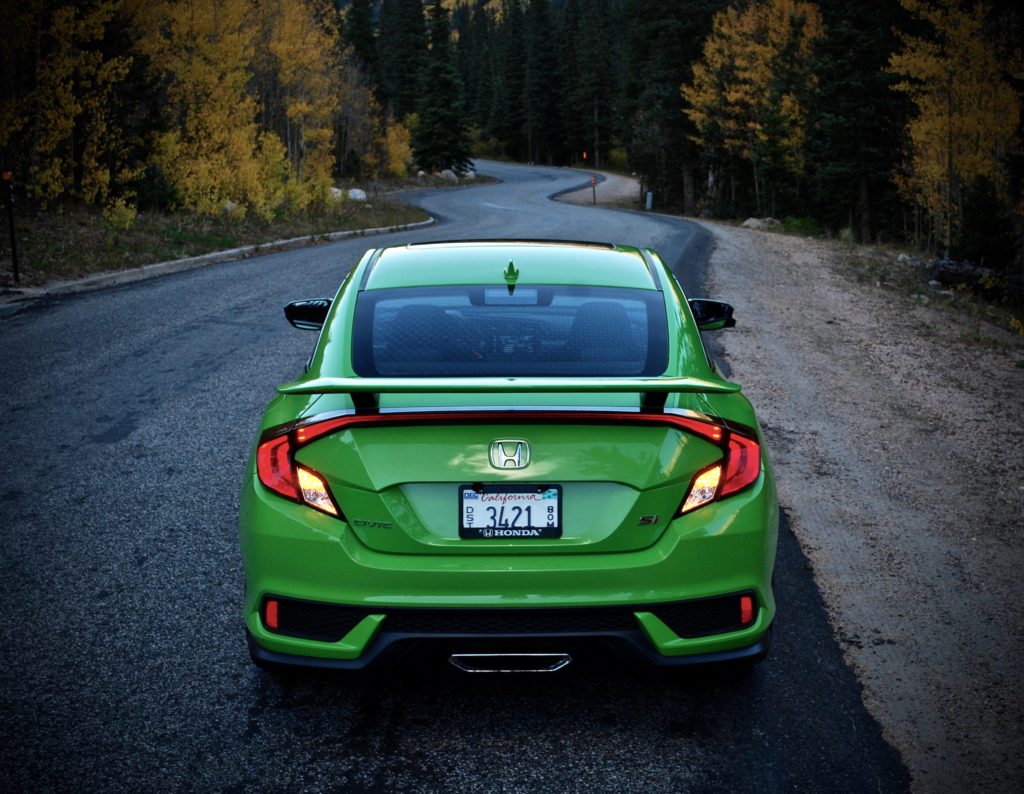
The good news is that the wave of turbo power comes on so low in the rev range that the engine doesn’t have to be spun into its upper range for decent acceleration or to avoid being bogged down in the next higher gear. In fact, keeping the engine speed churning between 2,500 and 4,500 RPM allows for an impressive rate of acceleration. Using an electronically actuated relief valve, the boost pressure is superbly controlled and builds smoothly without the on/ off nature that can make living with a turbo challenging.
While Honda has developed an impressively smooth turbo system, there is still work to be done surrounding light throttle application situations. The effective result is surging motion as the car can seemingly only accelerate or decelerate The phenomenon is noticeable on the highway (e.g. cruise control on with a slight downhill) and in low speed situations (e.g. parking lot, rush hour) where minimal throttle opening is necessary to maintain a set speed. In a car that performs so well, this is not a deal breaker but may be seen as an area for further tuning.
Heading into the mountains, up towards 11,600 ft, the engine continues to display its broad powerband. Steep switchbacks can be aggressively challenged without the attention of high rev’s. If it feels like the chassis can go faster in a turn, the turbo is happy to quickly abide.
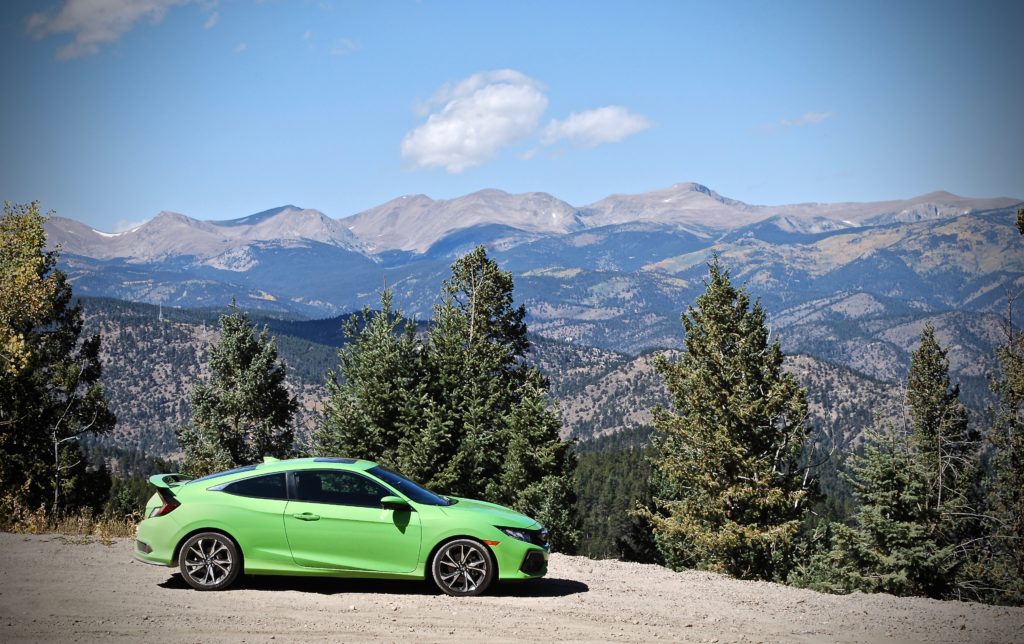
In the winding mountain roads is also where the real soul of this latest generation Si is on full display. The Adaptive Damper System (ADS), working with the upgraded suspension hardware, allows the Si to become a truly remarkable handling machine. In “Normal” mode, the dampers, throttle, and steering all take a more relaxed state and, like many front wheel drive sports cars, the car is sensitive to input changes when pushed near the limit. Adding steering angle while already in a turn can cause understeer while lifting off the throttle or tapping on the brakes in a turn can cause the weight to transfer and the rear end to come around until the electronic aids intervene and calm everything down. This is a result of compromised suspension tuning necessary for an acceptable ride quality while keeping a sense of agility. A simple press of a button puts the ADS into Sport mode and the entire chassis is ready for an all out attack on the mountain roads. Never upset by sudden throttle changes or quick transitions, the car is amazingly composed. Additionally, the large brakes and precise steering allow for the high handling limits to be explored without ruining another pair of briefs, and instead coming away with a damn near love affair with the car.
Putting the ADS setting back to Normal and the dampers reasonably isolate the cabin from road imperfections. For comparison, the Sport was too stiff for everyday use – as it should be. On the highway, the engine is quiet and the wind noise is well controlled. There was notable road noise coming from the 235/40R18 (0.8” wider than EX-T) but that is to be expected with these optional summer performance tires. In top gear, the engine easily generates enough power for any mountain climb and most overtaking situations. After a week of spirited driving I managed to achieve the EPA combined rating of 32 MPG which was very impressive given the high fuel consumption rate of turbocharged engines when driven hard.
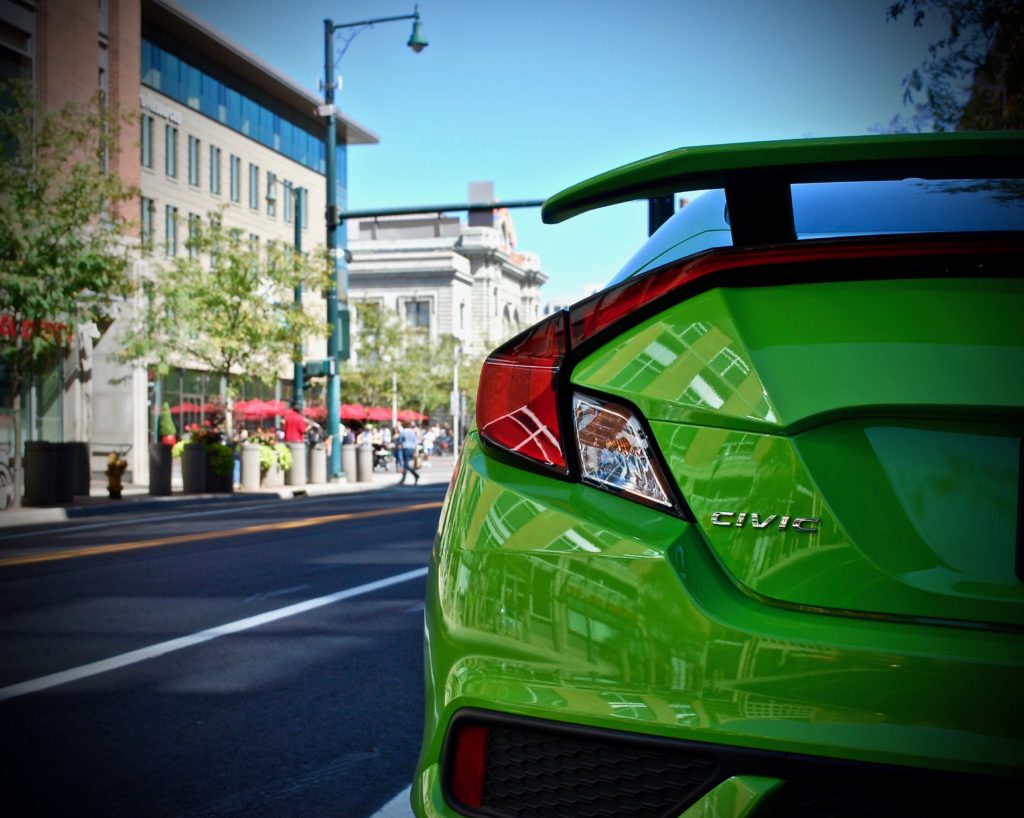
Summary of Results:
The story of the Si in America extends back to 1985 and has always represented a “sport-injected” version of the Civic. Since 1992, VTEC technology has played a big part in wringing the most power possible out of the small engines. It was once a technology ahead of its time, but today, the power and driveability advantages of VTEC have been eclipsed by precision operated electronic controls and turbocharging.
Looking beyond the thrills of VTEC, this car is better in every measurable and qualitative performance metric that can be thrown at it. The car is easier to live with on a daily basis. It handles better, is safer to drive, it’s more powerful, and even better to the environment. Most important of all, this Si shows that Honda isn’t mired by its past and, as several new launches have also proven, is willing to put in the time and effort to once again be at the top of its game.

